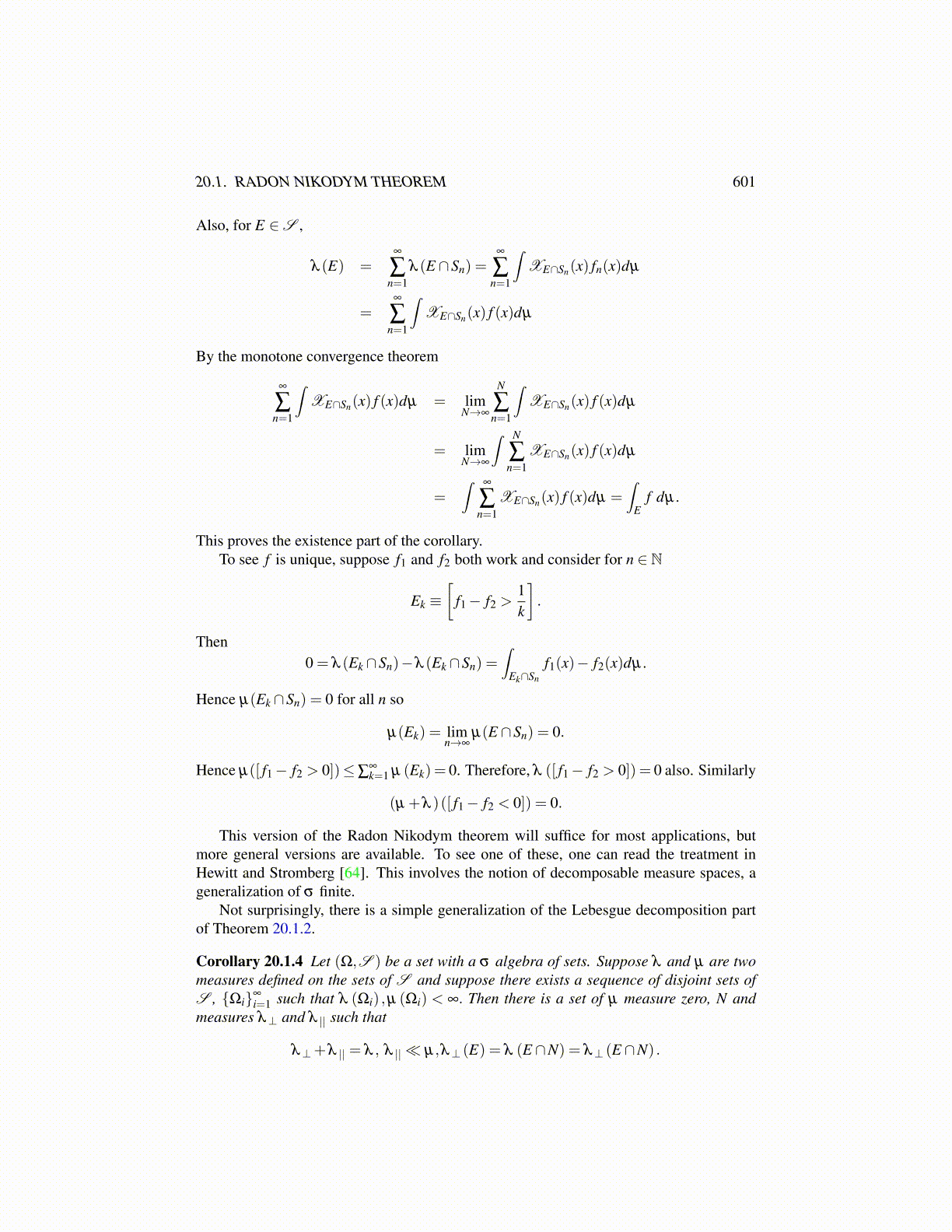
20.1. RADON NIKODYM THEOREM 601
Also, for E ∈S ,
λ (E) =∞
∑n=1
λ (E ∩Sn) =∞
∑n=1
∫XE∩Sn(x) fn(x)dµ
=∞
∑n=1
∫XE∩Sn(x) f (x)dµ
By the monotone convergence theorem
∞
∑n=1
∫XE∩Sn(x) f (x)dµ = lim
N→∞
N
∑n=1
∫XE∩Sn(x) f (x)dµ
= limN→∞
∫ N
∑n=1
XE∩Sn(x) f (x)dµ
=∫ ∞
∑n=1
XE∩Sn(x) f (x)dµ =∫
Ef dµ .
This proves the existence part of the corollary.To see f is unique, suppose f1 and f2 both work and consider for n ∈ N
Ek ≡[
f1− f2 >1k
].
Then0 = λ (Ek ∩Sn)−λ (Ek ∩Sn) =
∫Ek∩Sn
f1(x)− f2(x)dµ .
Hence µ(Ek ∩Sn) = 0 for all n so
µ(Ek) = limn→∞
µ(E ∩Sn) = 0.
Hence µ([ f1− f2 > 0])≤∑∞k=1 µ (Ek) = 0. Therefore, λ ([ f1− f2 > 0]) = 0 also. Similarly
(µ +λ )([ f1− f2 < 0]) = 0.
This version of the Radon Nikodym theorem will suffice for most applications, butmore general versions are available. To see one of these, one can read the treatment inHewitt and Stromberg [64]. This involves the notion of decomposable measure spaces, ageneralization of σ finite.
Not surprisingly, there is a simple generalization of the Lebesgue decomposition partof Theorem 20.1.2.
Corollary 20.1.4 Let (Ω,S ) be a set with a σ algebra of sets. Suppose λ and µ are twomeasures defined on the sets of S and suppose there exists a sequence of disjoint sets ofS , {Ωi}∞
i=1 such that λ (Ωi) ,µ (Ωi) < ∞. Then there is a set of µ measure zero, N andmeasures λ⊥ and λ || such that
λ⊥+λ || = λ , λ ||≪ µ,λ⊥ (E) = λ (E ∩N) = λ⊥ (E ∩N) .